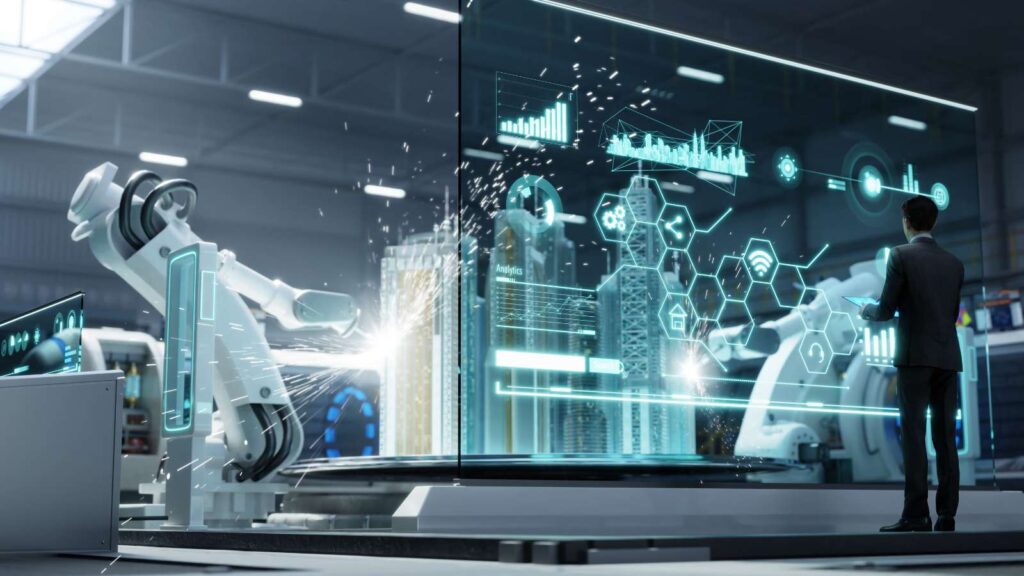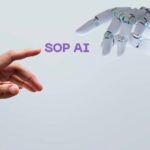Industry 4.0, also known as the fourth industrial revolution, is a term that encapsulates contemporary advancements in data exchange and automation in manufacturing technologies. It includes cyber-physical systems, the Internet of Things (IoT), cloud computing, and cognitive computing. Originating in Germany as a part of a government initiative to promote connected manufacturing, it has since become a global benchmark for industrial efficiency and innovation. The journey to Industry 4.0 started with the first industrial revolution, which introduced mechanized production powered by water and steam. The second revolution introduced mass production with the help of electric power, while the third revolution began with the adoption of computers and automation technology in factories. Now, Industry 4.0 represents the blending of the digital and physical worlds through cyber-physical systems, marking a significant shift in the industrial paradigm.
Table of Contents
ToggleThe Core of Industry 4.0: Digitalization
In Industry 4.0, the Internet of Things (IoT) and Big Data are integral. IoT refers to the network of physical objects embedded with sensors, software, and other technologies for the purpose of connecting and exchanging data with other devices and systems over the internet. These connected devices generate vast amounts of data, which can be analyzed to optimize production, reduce waste, and make real-time decisions. Big Data analytics in manufacturing can predict machine failures, streamline supply chains, and enhance quality control.
Cloud Computing and Cyber-Physical Systems
The marriage of cloud computing and cyber-physical systems forms the backbone of Industry 4.0. Cloud computing offers manufacturers flexible, on-demand access to a range of computational resources and services, enabling them to handle large datasets and complex computations more efficiently. Cyber-physical systems (CPS) are integrations of computation, networking, and physical processes. Embedded with software, sensors, and actuators, CPS can interact with the physical world and the digital world. They are critical for achieving the advanced levels of automation and manufacturing intelligence that Industry 4.0 promises.
Software in Industry 4.0
Software is the driving force behind the smart factories of Industry 4.0. It enables the automation of complex manufacturing processes, provides advanced analytics for decision-making, and facilitates the integration of various systems within the manufacturing environment. Software solutions range from Manufacturing Execution Systems (MES) that track and document the transformation of raw materials to finished goods, to Advanced Planning and Scheduling (APS) systems that optimize production schedules.
Building a Paperless Factory
The concept of a paperless factory is central to Industry 4.0. It involves digitizing all paper-based processes supported by SOP Sofware, which leads to significant improvements in efficiency, accuracy, and accessibility. This transition helps in minimizing errors associated with manual data entry and paperwork handling. Digital documentation systems, integrated with IoT devices, ensure that data from the shop floor is captured and made available in real-time for analysis, leading to more informed decision-making and quicker response times.
Implementing Digital SOPs in Industry 4.0
Digital Standard Operating Procedures (SOPs) are critical in ensuring standardized, efficient, and error-free operations. Unlike traditional SOPs, digital SOPs are interactive, easily accessible, and can be updated in real-time. They can include multimedia elements like videos and animations to enhance understanding and retention.
Benefits and Implementation Strategies
The benefits of digital SOPs are manifold. They provide a consistent approach to tasks, reduce training time, and ensure compliance with industry standards. Implementing them involves identifying critical processes, digitizing existing SOPs, training employees, and using feedback to continuously improve these procedures. Regular audits and updates are essential to keep the SOPs relevant and effective.
VR in Skills Development and Training
Virtual Reality (VR) technology offers immersive, interactive training environments. It allows employees to practice complex or dangerous tasks in a safe, controlled virtual space. VR training can simulate real-world conditions without the risk of injury or damage to equipment. This method is particularly beneficial for training in high-risk environments, such as chemical processing or heavy machinery operations.
Case Studies: VR in Action
Industries like aerospace, automotive, and healthcare have successfully implemented VR for training purposes. For example, an automotive company might use VR to train workers on assembly line processes, allowing them to practice assembling parts in a virtual environment. This not only improves their skills but also helps in identifying potential issues before they occur in the real human resource management. With a digital skill matrix, managers can efficiently assign tasks based on current skill levels, plan for future training, and support career development paths for employees.
Embracing Industry 4.0
Industry 4.0’s future is set to introduce advanced technologies like deeper AI, advanced robotics, and sophisticated IoT. These will boost efficiency but also pose challenges such as cybersecurity risks, workforce upskilling needs, and significant new technology investments. For successful Industry 4.0 adoption, organizations need a comprehensive strategy. This includes technology investment, workforce training, and a culture shift towards continuous improvement. Understanding specific needs and potential ROI of Industry 4.0 initiatives is vital. Cross-department collaboration, involving IT, operations, and human resources, is key for a smooth transition to advanced manufacturing.





